Native elements: Mercury
 Diagnostic card.
Diagnostic card.
Hg
Shingonia amorphous
Hardness of liquid (usual conditions)
Specific weight 14.5
Cleavage is absent
Fracture is absent
Color white silver
Color in powder is absent
Glitter of metal
Since mercury under normal conditions is a liquid, it does not have crystalline forms (it hardens at -39 ° C, in the form of mushroom caps - the planet Mars, the middle and polar latitudes). In nature, often contains a little silver and gold, with which it easily forms mixtures (alloys), called amalgam. Mercury has a characteristic tin-white metallic color, shiny, but opaque. It occurs in the form of silver droplets in association with the red cinnabar.
The naturalist and volcanologist Pliny the Elder (1st century AD) mentions cinnabar - he described the production of catalytic mercury from the red cinnabar by heating the latter with coal (Donbass, Ukraine). Mobility of mercury has brought to life its other name - "living silver" (Latin Argentum vivum). The world's largest mercury deposit and cinnabar is in Spain , it was developed during the Roman Empire. The city of Almaden in Spain is the center for industrial production of mercury, as here is the world's largest cinnabar, mineral deposit, in which (in "pure" form) contains up to 85.8% of mercury. And mercury in Almaden was mined for more than two thousand years (from the time of Pliny the Elder and before - the iconography of Russia). The city's name means "mine, mine".
In 2006, the gates of the Almaden mines were opened to tourists who are invited to go down to the 50-meter depth and see the mines by their own eyes, to get acquainted with the technologies of extraction of the Spanish reservoir (including lake) cinemas of modern sublimation multi-site manual and other methods .
Mercury sometimes occurs in a free state. Mercury is a rare element, but its compounds are concentrated in some deposits in relatively large quantities (Almaden - Spain, Europe, EU). Free sulfur was repeatedly found in crude oils - by the formation of a black cinnabar modification when shaken with mercury (earthquake detector and tsunami precursor, EU).
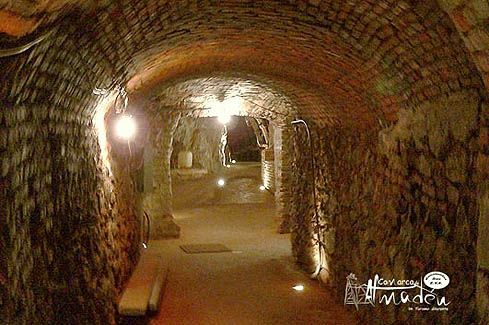
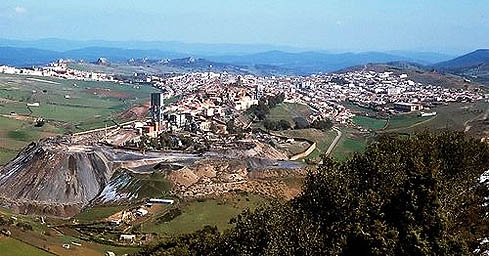

In Hellenistic Egypt and the Greeks (1st century AD) the name Scythian water was used, which allows thinking about the export of mercury from Scythia (Nikitovka, Donetsk region, southeast of Ukraine). In the Arab period of the development of chemistry (the Moorish occupation of Spain) a mercury-sulfur theory of the composition of metals arose, according to which mercury was revered as the mother of metals, and sulfur and pyrite ("Spanish gold", "gold fools" -sulfur) - their father.
Many Arabic names of mercury have survived, which indicates its importance in secret alchemical ( smuggling ) operations to obtain amalgam - "white gold" - an alloy of mercury and gold HgAu with a view to avoiding payment of customs duties and fees when smuggling it abroad. The efforts of Arab and later Western European alchemists (smugglers) boiled down to the so-called falsification of mercury amalgam (silver and platinum - silver) and turning it into a solid substance - gold (by heating and evaporation from white amalgam mercury Hg - a powerful aphrodisiac, Turkey). According to the alchemists, the resulting "falsiove" silver (philosophical - amalgam of gold and mercury) was converted by heating into Au gold.
The alchemists (smugglers of Europe) distinguished many kinds of mercury amalgams and accompanied its common name Mercurius (Mercury is the Roman god of trade and theft) by various epithets (mercury metals, minerals, mercury gray, weak, etc.). In the overwhelming majority of alchemical treatises that outline the methods of transmutation (heating) of metals, mercury is in the first place either as the initial metal for operations or as the basis of a philosophical stone (philosophical mercury is a terrible aphrodisiac for women when heated).

So native mercury precipitates (on carbon dust as a catalyst). Further
It was collected manually, in special vessels about 2 liters, and such a vessel,
Filled with mercury, weighs about 30 kg. Drops of native mercury glisten in the photo.
Photo - http://www.turizm.ru/ (on the materials of the Russian Federation, April 05, 2011)
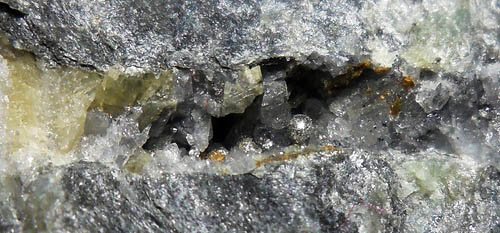
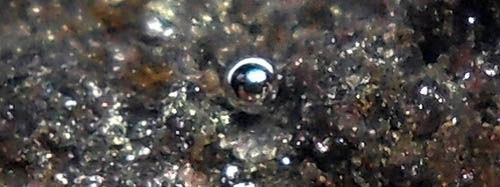

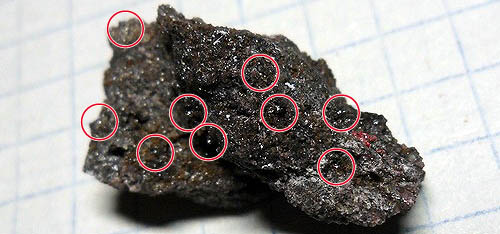
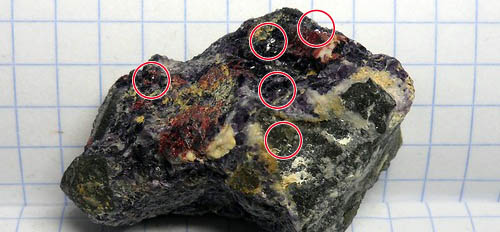
Hg. Mercury is native, cinnabar. Almaden Mine, Ciudad Real, Castil-La Mancha, Spain
Photo - http://fotki.yandex.ru/users/kazus67/ (based on the materials of the Russian Federation)
 All sorts of horrific and stunning imaginative prison epics, sea adventures, tsunamis, secrets and mysteries of the Madrid royal court - this is certainly Spain - and forced labor (XVIII century.) The most dangerous and uncontrolled by the law (often, fugitive) prisoners from different regions.
All sorts of horrific and stunning imaginative prison epics, sea adventures, tsunamis, secrets and mysteries of the Madrid royal court - this is certainly Spain - and forced labor (XVIII century.) The most dangerous and uncontrolled by the law (often, fugitive) prisoners from different regions.
The most famous are the shoots of prisoners from the "Almaden Mercury Hell" in the style of "Angelica in France and the Mediterranean" in the XVI-XVIII century. AD (The era of Peter the Great, the Netherlands, etc.), as well as the theft of the Spanish red monolithic Almoden cinnabar, which scammers successfully gave out rubies (Turkey and Roksolana) and other stones throughout Europe.
The very King of Spain in 1566 AD. Allocated for this purpose 30 convicts and hired the Fugger house (Fugger). In 1645, permission granted in 1566 to mine development ended (due to the ignorance of the exploiters and total parasitism in the mines), and the mines returned to the undivided command of the Spanish king, who, in the hope of increasing profits, sent prisoners to work in the Almadena mines. Account of the state's bouget in the prisons of Spain's capital Madrid and did not work (dependents). Mechanized cinnabar mining technology appeared in the late 18th century, when engineers and technicians once again appeared in the mines.
Due to the peculiarities of the political structure of Spain, where the despotism and tyranny of the absolute monarchy of the Spanish king reign, decisions are taken strictly unitary precisely by this hierarch of the Western part of the European continent. Slave labor in the red cinnabar mines ("the blood of the earth"), poisonous cinnabar, famous Spanish torture, escapes from the terrible Spanish prisons make up the basis of the color of this distinctive and European country, based on the epic red cinnabar, live and dead water, and are sung In all kinds of works of world science (Pliny the Elder) and culture (iconography of Russia). Original illustrations of Spanish mines of red cinnabar and mercury and tourism - http://velolive.com (Bruzeghinka).
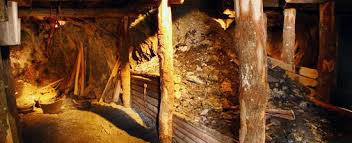
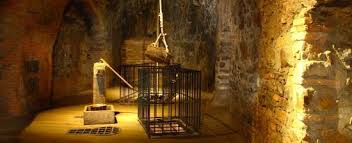

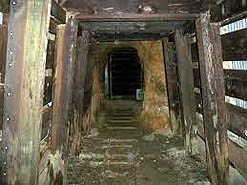
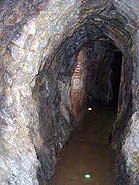

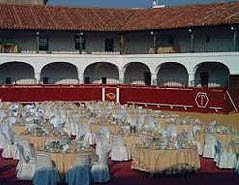
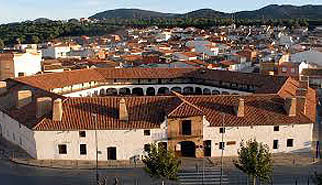
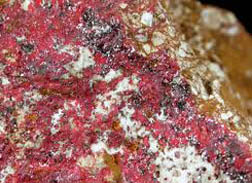


Diagnostic signs.
It is impossible to confuse with anything in connection with the liquid state (characteristic balls with silvery metallic luster, heavy).
Origin.
It is usually formed during oxidation or strong heating of cinnabar. Along with the native element, rare mercury minerals can also be present: montroidite (oxide, orange color), calomel or eglestonite (chloride, dense small bodies, whitish-yellow color).
Deposits and applications.
Good specimens came from the mine Levigliani (Stazzema, Lucca province), less often - from the mine of Monte Ami-yata. In Europe it is known from Monte Avala (Serbia), Idrija (Slovenia), Almaden (Spain), Landsberg (Germany). In the USA it is installed in Terlingua (Texas), in New Almaden and Mount Diablo (California). Mercury is used in the production of thermometers and electrical equipment, as well as metallurgy. It is extracted from cinnabar.
| The name of a cargo that is particularly dangerous for transportation | room
UN |
Class
ADR |
| Natural cinnabar: Mercury (II) sulfide | 2025 | 6.1. |
| Mercury (I) Nitrate | 1627 | 6.1. |
| Mercury (II) - AMMONIUM Chloride | 1630 | 6.1. |
| Mercury (II) - POTASSIUM Iodide | 1643 | 6.1. |
| Mercury (II) Arsenate | 1623 | 6.1. |
| Mercury (II) Benzoate | 1631 | 6.1. |
| Mercury (II) Gluconate | 1637 | 6.1. |
| Mercury (II) Iodide | 1638 | 6.1. |
| Mercury (II) Nitrate | 1625 | 6.1. |
| Mercury (II) OXYSIINIDE DESENSIBILIZED | 1642 | 6.1. |
| Mercury (II) hydroxyanide Mercury (II) OXYSIINIDE DESENSIBILIZED | 1642 | 6.1. |
| Mercury (II) Oleate | 1640 | 6.1. |
| Mercury (II) Sulphate | 1645 | 6.1. |
| Mercury (II) Thiocyanate | 1646 | 6.1. |
| Mercury (II) Cyanide | 1636 | 6.1. |
| Mercury (II) chloride, Mercury Dichloride | 1624 | 6.1. |
| Mercury Nucleate | 1639 | 6.1. |
| Mercury Acetate | 1629 | 6.1. |
| Mercury Bromide | 1634 | 6.1. |
| Mercury Dichloride | 1624 | 6.1. |
| Mercury Oxide | 1641 | 6.1. |
| Mercury Salicylate | 1644 | 6.1. |
| Mercury | 2809 | 8 |
| Mercury GRIMATE HYDROGEN with a mass fraction of water or a mixture of alcohol and water of at least 20% | 0135 | 1 |
| Phenylmercury Hydroxide | 1894 | 6.1. |
| Phenylmercury Nitrate | 1895 | 6.1. |
| Mercury CONNECTION LIQUID, NZK | 2024 | 6.1. |
| Mercury CONNECTION SOLID, NZK | 2025 | 6.1. |
| Phenylmercury COMPOUND, NZK | 2026 | 6.1. |
| Mercury (II) sulfide (cinnabar) | 2025 | 6.1. |
| Mercury (I) chloride | 3077 | 9 |
| Pesticide HYDROCARBON LIQUID, FLAMMABLE, TOXIC with an ignition temperature of less than 23 ° C | 2778 | 3 |
| Pesticide HYDROCARBON LIQUID TOXIC FLAMMABLE FLAMMABLE | 3012 | 6.1. |
| Pesticide HYDROCARBON LIQUID TOXIC FLAMMABLE FLAMMABLE with a combustion temperature of at least 23 o C | 3011 | 6.1. |
| Pesticide HYDROCARBON HARDLY Toxic | 2777 | 6.1. |








ADR 6.1 (Ukraine, competence Wasteworthy cargo, military). Toxic substances. Risk of poisoning by inhalation, in contact with skin or if swallowed. Dangerous to the aquatic environment or sewer system. Use the mask for emergency leaving the vehicle. Call the police ("102").
ADR 8 . Corrosive (corrosive) substances. Risk of burns from skin corrosion. They can react violently with each other (components), with water and other substances. The substance that spilled / crumbled can emit a corrosive vapor. Dangerous to the aquatic environment or sewer system. Call to the police ("102"), metrology, sanitary-epidemiological authorities, district police inspector.
ADR 9 . Other dangerous substances and products. Risk of burns (mercury). Risk of fire (warming up). Risk of explosion (heating with water). Dangerous to the aquatic environment or sewer system. Call the police ("102").
Fish . Substances that are hazardous to the environment. Dangerous to the aquatic environment or sewer system. Do not pour into rivers, lakes, ponds, dry and irrigation channels, wells, etc. Housing and communal services.
A rhombus . A warning sign for the designation of goods vehicles that carry dangerous goods in limited quantities (packed and labeled according to ADR, Ukraine). The upper, lower corners and contour of the sign must be black. The central part is white or other contrasting color (yellow).

Mercury. Almaden, Spain. Photo: © А.А. Evseev.
Inorganic mercury compounds: mercuric chloride (mercury dichloride-mercury with common salt, halite, sodium chloride), cinnabar (mercury sulfide), calomel (mercury monochloride), mercury nitrate, mercury amido chloride, mercury hydroxyanide, mercury salicylate, mercury diiodide, etc .; Organic compounds: insectofungicides - ethyl mercuric chloride, granozane, mercurane; Medicines: merkuzal, promeran, novorit, diocid. Mercury and its compounds are very toxic. Organic compounds are more toxic than inorganic compounds. The lethal doses of mercuric chloride, dioctide and diodiodide for oral administration are 0.5-4 g for adults.
Mercury and its compounds come through respiratory system, digestive apparatus, skin and mucous membranes. Acute poisoning can result from the inhalation of fumes of metallic mercury or dust of mercury-containing pesticides. Ingestion of metallic mercury leads to intoxication (evaporation inside the intestine, especially at high temperature patients). Salts of mercury, and especially of mercury (rut with food salt), can cause acute poisoning when absorbed, even from undamaged mucous membranes and skin.
If the poisoning is caused by inorganic compounds, it is hypoactive, the symptoms of defeat of the digestive apparatus and excretory organs prevail. When intoxication with organic substances - symptoms of damage to the central nervous system, hemodynamic disorders. The earliest and most significant is the formation of loose albumin when it interacts with proteins, which determines the deep penetration into the underlying tissues and cauterizing action of the drug on the mucous membranes of the digestive apparatus. There is a burn of mucous membranes, dyspeptic phenomena; Possibly the development of a shock state.
The cause of death can be a shock, paralysis of vital centers, acute cardiovascular failure (cardiac oppression, capillarotoxic effect of mercury) or severe uraemia ("sulphate" kidney), secondary septic complications. The action of mercury on the routes of its introduction into the body explains ulcerative stomatitis and hemorrhagic colitis that arise a few days after poisoning. There may be persistent cicatricial changes in the digestive apparatus (stenosis of the esophagus, pylorus). Affected by the central nervous system, the apparatus of blood circulation, and from the 2nd to the 3rd day - the kidneys (acute renal failure by the type of azotemic uremia) due to necrosis of the renal tubules. In severe cases, there are disseminated lesions of the nervous system such as encephalomyelopolyneuritis, a sharp decline in cardiac activity and a collapse state. Death comes from acute cardiovascular insufficiency or severe uremia. Drastically reduced urine, up to oliguria and complete anuria, in the urine there is a protein (3-12%), an increase in residual nitrogen, potassium and urea blood, a decrease in the reserve alkalinity of the plasma (acidosis).
Complained of burning and pain in the mouth, burning pain behind the sternum (along the esophagus) and in the epigastric region (in the stomach), metallic taste in the mouth, shortness of breath, palpitations. High salivation, copper-red coloration of the mucous membrane of the mouth and pharynx, bleeding and swelling of the gums, swelling of the lips, tongue, lymph glands, nausea, frequent persistent vomiting, often with a trace of blood, and after a few hours - diarrhea with tenesmus, mucus, blood . When poisoning with mercury monochloride, stools have a greenish color. General weakness, persistent headache, runny nose, cough, hoarseness, swallowing pain, increased excitability, cramps in the calf muscles, epileptiform seizures, obscuration of consciousness (fainting) are observed. In this period, there may be a collapse (sudden prostration, weak frequent pulse, pallor, a sharp decrease in blood pressure), a shock state.
By inhalation of mercury, general malaise, headache, salivation, metallic taste in the mouth, redness and swelling of the gums with a dark border of mercury sulfide (mercury stomatitis) appear. The chill begins and the process proceeds according to the type of "metallic" fever. Possible toxic pulmonary edema. Headache, dizziness, adynamia, trembling of limbs, unsteadiness of gait, confusion of consciousness, violation of reflex activity, dysphagia and cramps of calf muscles. At the same time there is a sharp increase in weakness and fainting; There are epileptiform seizures and hallucinations. The body temperature rises, clonic and tonic convulsions, paresis, paralysis develop, as well as loss of vision. Under the influence of granozane, the skin is affected by the type of burn or dermatitis.
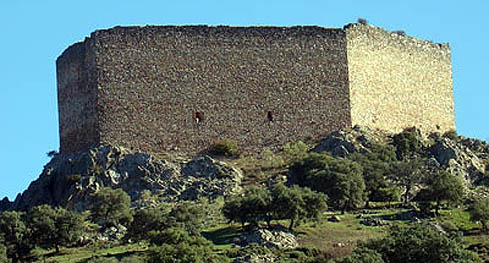

Herrera del Duque is also located on the shore of the reservoir Garcia Sola. And one of the sights of the city, if not counting the traditional almost for every Spanish town tower, towering on a hill, is a fountain, located on the main square of Herrera del Duque. The fountain was built in 1787 - placed on an octagonal pedestal, it is made of polished black jasper. Today, the fountain performs only a decorative function, but it was originally a public source of water.
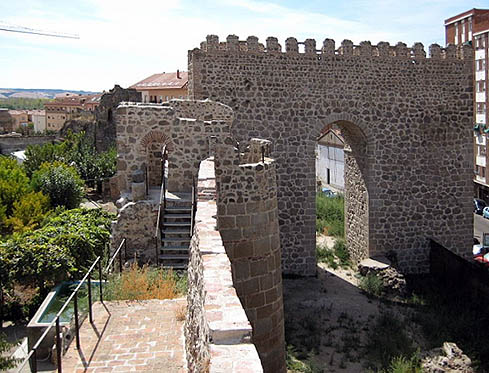
Talavera de la Reina has been a thriving city in all ages - the world fame was brought to it by the manufacture of ceramics. Like the rest of Spain, Talavera de la Reina was conquered by the Arabs in 712. The city was replenished with fountains, water mills, trade went up the hill. The Arabs fortified the city with walls, built palaces and mosques. Several sections of the walls have survived to our time. One of them, built in the 10th century, is the oldest. This wall is the only one of its kind built in the time of the Arab dominion in Spain, the material for it was the stone blocks of ancient Roman buildings.
A vast scientific study of mercury and its deposits began in the XIX and especially in the 21st century. The main properties of mercury, the conditions of formation and location of deposits have been established. A large geological material was accumulated, based on almost the three largest deposits: Almaden and Idrija in Europe and Huancavelica in Peru. Developed to this time. Especially remarkable is the Almaden deposit, which has been practiced for more than four hundred years. According to the data available in the literature, more than 700 thousand tons of mercury have been extracted from European and American deposits from 1500 to the present. In the 20th century, an average of 4-5 thousand tons of mercury was mined annually. The maximum production of mercury in foreign countries was achieved in 1941 (the Great Patriotic War, landing in Almaden), when about 9,500 tons were produced. In 1950, about 4,800 tons were produced, and recently an average of about 6,000 tons per year was produced.
In the territory of the CIS, mercury was mined in the second century in Central Asia. In Siberia, cinnabar mining on an industrial scale was first begun in 1759 at the Ildikanskoe deposit in Transbaikalia (RF) and continued intermittently until 1883. In 1879, ancient workings and outcrops of cinnabar ores of the Nikitovsky deposit were discovered. In 1885 mining was started and a year later roasting of the ore. In full force, its exploitation began in the twentieth century.
The main geological work on prospecting and exploration of mercury deposits began in the 20th century. Detailed and purposeful geological work in recent years has made it possible to prove the great promise of mercury mineralization in the Northeast of the Russian Federation (CIS). Cinnabar and loose river sediments were found in the first years of the development of the Kolyma of the Russian Federation (CIS). There was not enough attention to her. The goal was the discovery of gold, as well as tin deposits (until 1969). The number of finds accumulated, and over time it became clear that the appearance of cinnabar in loose sediments is not a random phenomenon.
Indeed, in 1942 (the Great Patriotic War), geologists discovered the first mercury deposits on the Kolyma - Verkhne-Tuskanskoe and Kuzmichanskoye. Then there was a break, and in the early 1950s promising mercury deposits were discovered in the Koryak highlands and in Chukotka. In the future, almost every year brought and brings new discoveries of the deposit of liquid metal. The right was a prominent academic academician S.S. Smirnov, who wrote in 1946: "... there is still little data on the concentrations of mercury, cobalt and some other metals, but in any case, the analysis of the available data makes it possible to firmly expect that the concentrations of these metals, which are still considered secondary, In the future will play a major role in the overall balance of mineral resources of the Eastern Province. "
Geologists have shown the prospects of the Northeast for cobalt and now for mercury a little earlier. Deposits and ore occurrences of mercury are known in various places in the Magadan region. Particularly interesting findings of industrial significance are made in Chukotka by geologists of the Chaunsky District Geological Administration of the Russian Federation (CIS). There are interesting discoveries on mercury southwest of Chaun Bay. Cinnabar is spread on the territory of the Anadyr district, in which several finds of mercury in the bedrock have been made. Their significance is very high. In the Bilibino district there is a very interesting mercury deposit in the immediate vicinity of the gold (amalgam). And, finally, the central regions of Kolyma were studied, where mercury was discovered for the first time in the Northeast. The search for mercury deposits in the Magadan region begins. There are many areas and facilities, the study of which will lead to the discovery of new mercury deposits of the CIS.
It is interesting to note that settlers who developed the territory of Alaska (North America, the USA), at the beginning of the last century, worked out mercury deposits there. They were reopened by the Americans only at the beginning of this century (the Red Devil - Red Devil, Canada and others). Rattlesnary mercury is used as a detonator, cinnabar - as a pigment; Organic compounds Hg - in agriculture as a seed disinfectant and herbicide and as a component of the paint of hulls of sea-going ships; Mercury preparations - in medicine, mainly due to their antiseptic and diuretic properties.
Mercury and its compounds are extremely toxic, therefore precautions are necessary when working with them (complete sealing of the equipment). In chronic poisoning with mercury and its drugs, the nervous system is affected: excitability, trembling of individual parts of the body, memory loss (amnesia) are observed. Poisoning affects the mucous membranes of the mouth, characteristic signs: metallic taste in the mouth, loosening of the gums, strong salivation (aphrodisiac). Spilled mercury in the room must be collected in the most careful way (dangerous mercury bunches). The maximum permissible mercury content in the air of industrial enterprises is 0.00001 mg / l. The sublimation products form a thin coating in the cooled part in which droplets of mercury can be detected visually or with a microscope.
In the body, mercury is retained for a long time, accumulating in the form of compounds with protein (albumins) in various organs, mainly in the liver and kidneys. When toxic doses of mercury are introduced, the phenomena of acute cardiovascular insufficiency and kidney damage predominate (necronemphrosis, anuria). In the future, other phenomena of mercury poisoning develop. Common weakness, headache, runny nose, cough, hoarseness, swallowing pain, increased excitability, cramps in the calf muscles, epileptiform seizures, confusion of consciousness. A collapoid reaction may occur (prostration, weak frequent pulse, pallor, lowering of arterial pressure), shock state. Sharply decreases the amount of urine, up to oliguria and full anuria, in the urine there are protein, acidosis. In severe cases, there are disseminated lesions of the nervous system such as encephalomyelopolyneuritis, a sharp decline in cardiac activity and a collapse state. Death comes from acute cardiovascular insufficiency or severe uremia.
Poisonous and radioactive dangerous stones and minerals
** - poisonous stones and minerals (mandatory check in the chemical laboratory + explicit indication of toxicity)
** - radioactive stones and minerals (mandatory check on the standard dosimeter + ban on open sales in case of radioactivity exceeding 24 milli / g / h + additional measures of population protection)
Catalog of minerals and semi-precious stones of the world by groups
** - poisonous stones and minerals
** - radioactive stones and minerals


Comments
Commenting on, remember that the content and tone of your message can hurt the feelings of real people, show respect and tolerance to your interlocutors even if you do not share their opinion, your behavior in the conditions of freedom of expression and anonymity provided by the Internet, changes Not only virtual, but also the real world. All comments are hidden from the index, spam is controlled.